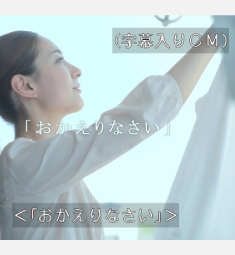
Why Get Married in March?
According to 2008–10 statistics compiled by the Ministry of Health, Labour and Welfare, more marriages were registered in the month of March—an average of 72,002—than in any other month. In previous decades, April–May and November–December had been the most popular months, but this changed at the turn of the century, when the number of couples tying the knot in March began to soar.
Atsuko Okano, an authority on marriage, tells Nikkan Gendai (23 March) the reason may be tied to the numerous social events in the period leading up to March, including Christmas, St Valentine’s Day and White Day (March 14).
Another factor may be the profusion of so-called “herbivorous males”, a term used to describe men who tend towards passive behaviour when encountering the “weaker” sex.
“Men these days aren’t willing to propose to women unless they can confirm a woman’s good intentions on St Valentine’s Day”, Okano explains. “There’s even a ‘manual’ that helps walk them through the marriage proposal process on White Day. In any event, recently the time between proposal and marriage has become shorter”.
Other factors that may influence the choosing of March might include the business year, since promotions and transfers tend to take effect before April. At weddings, it’s customary for one’s job supervisor to make a congratulatory speech.
One thing for certain is the notion that June brides tend to be rarities in Japan: during the aforementioned three-year period, the sixth month on the calendar ranked ninth for the number of marriages, with a monthly average of 55,303.
Globalising Education: Just Academic?
April, in addition to marking the start of the government fiscal year, is the season for Japan’s school matriculation. But a number of major institutions, such as The University of Tokyo, are looking down the road to fall into step with most other countries, by changing the start of the academic year to autumn. This will occur around 2017, which means it will take effect about the time the present crop of middle-school students is ready for university.
The Nikkei Marketing Journal (2 March) reports that education-related businesses are making preparations accordingly. Some yobiko (examination preparatory schools) are starting to fall in line with curriculums to meet the needs of an altered academic year. The Ochanomizu Seminar, operated under the umbrella of the Benesse Group, last year began a new overseas preparatory course for middle- and high-school students. If the practice takes root, various opportunities are likely to arise catering to students during the six-month gap term that will open up between graduation in March and matriculation in September.
The average man and woman on the street, however, does not appear to be in favour of the change. When the Asahi Shimbun’s online “be between” survey asked 3,235 subjects if they liked the idea of shifting the start of the school year to autumn, only 39% replied they favoured such change, as opposed to 61% who wanted to maintain the status quo. Most of the respondents who like the idea gave reasons related to international practice and its beneficial effects on the internationalisation of Japan’s education system, including the fact that this would make it easier for more students to study abroad.
Nonetheless, of all respondents, 74% stated they felt overseas study is a good thing, as opposed to only 7% who looked upon it with disfavour. (The percentage of respondents who said they would like Japanese institutions to accept more foreign students was almost identical.)
 Ads Appeal to the Hard of Hearing
Ads Appeal to the Hard of Hearing
In the interests of disseminating more television advertisements that utilise subtitles, household-goods maker Kao announced it would make its subtitling technology available to the 270 main members of the Japan Advertisers’ Association, in order to standardise the system. Japan is estimated to have 19.4mn people with impaired hearing and, in Kao’s view, the country’s growing elderly demographic will require more viewer-friendly methods if they are to “get the message”. Advertisers in the Kao Group have already produced about 150 advertisements with subtitles.
Standardisation would include the time during which lines of narrative text are displayed, and their positioning on the screen. The firm will also share its in-house rules related to subtitle content and factors related to cost. Currently, a variety of subtitling methods are in use by different networks but, with the phasing out of analog television and the move to terrestrial digital broadcasting since last July, the industry is now in a better position to consider standardisation.
No Time Like Now to Rent an Office
Japan’s economy might be forced to confront a malignant “2012 Bug”. Writing in Sapio (4 April), business consultant Kenichi Ohmae notes that, with the March 2012 ending of an extension to the previous three-year “moratorium law”, aimed at bailing out small and medium-size realtors, Tokyo is likely to be faced with a glut of office space. At the end of January, the building vacancy rate in the five central wards (Chiyoda, Chuo, Minato, Shibuya and Shinjuku) reached 6.39%, up 0.74 percentage points over the previous month. Meanwhile, the vacancy rate for buildings less than one year old rose 10.8 points, from 27.6% to 38.4%. Rents per tsubo (3.306m2) fell to ¥19,707, the first time since 1994 that they had dropped below ¥20,000—a level considered “dangerously low” by developers.
To reduce fixed costs, more firms have been relocating away from Tokyo’ s high-rent areas by delegating their back-office functions such as accounting, administration, personnel, procurements, etc., to outside the metropolitan area, or in some cases outside Japan.
Operators of older medium-sized properties are said to be refurbishing and then offering lower rates that aim to undercut those of larger, newer facilities.
Some landlords have been offering prospective tenants attractive incentives, such as a rent-free arrangement for the first two years, followed by a pledge not to increase rents for five years. Some building operators are also offering to pay new tenants’ relocation costs.
Buying Cheaper, Bigger TVs
The Nikkei Marketing Journal (21 March) reported that people are buying larger-screen televisions. Thanks to the drop in prices, industry data show that sales of televisions with screens of 50in or more doubled in February over the previous year. According to consumer survey firm BCN, 40in or larger screens accounted for one-quarter of all sales, an increase of 2.8 percentage points over the year before. The main purchasers appear to be people who are replacing flat-screen digital models they purchased four or five years ago.





